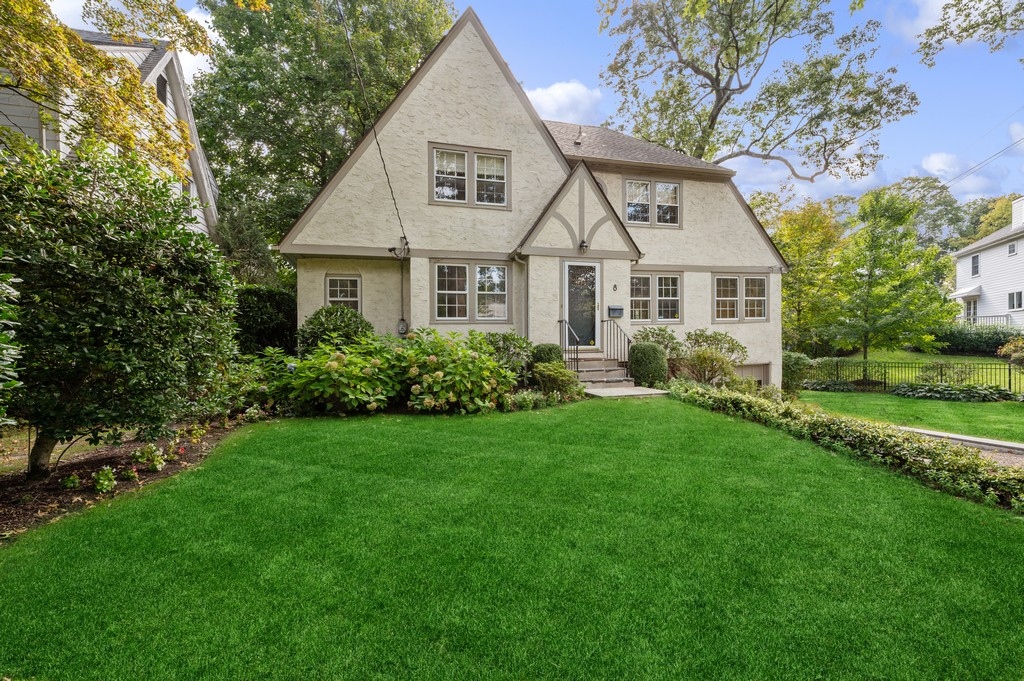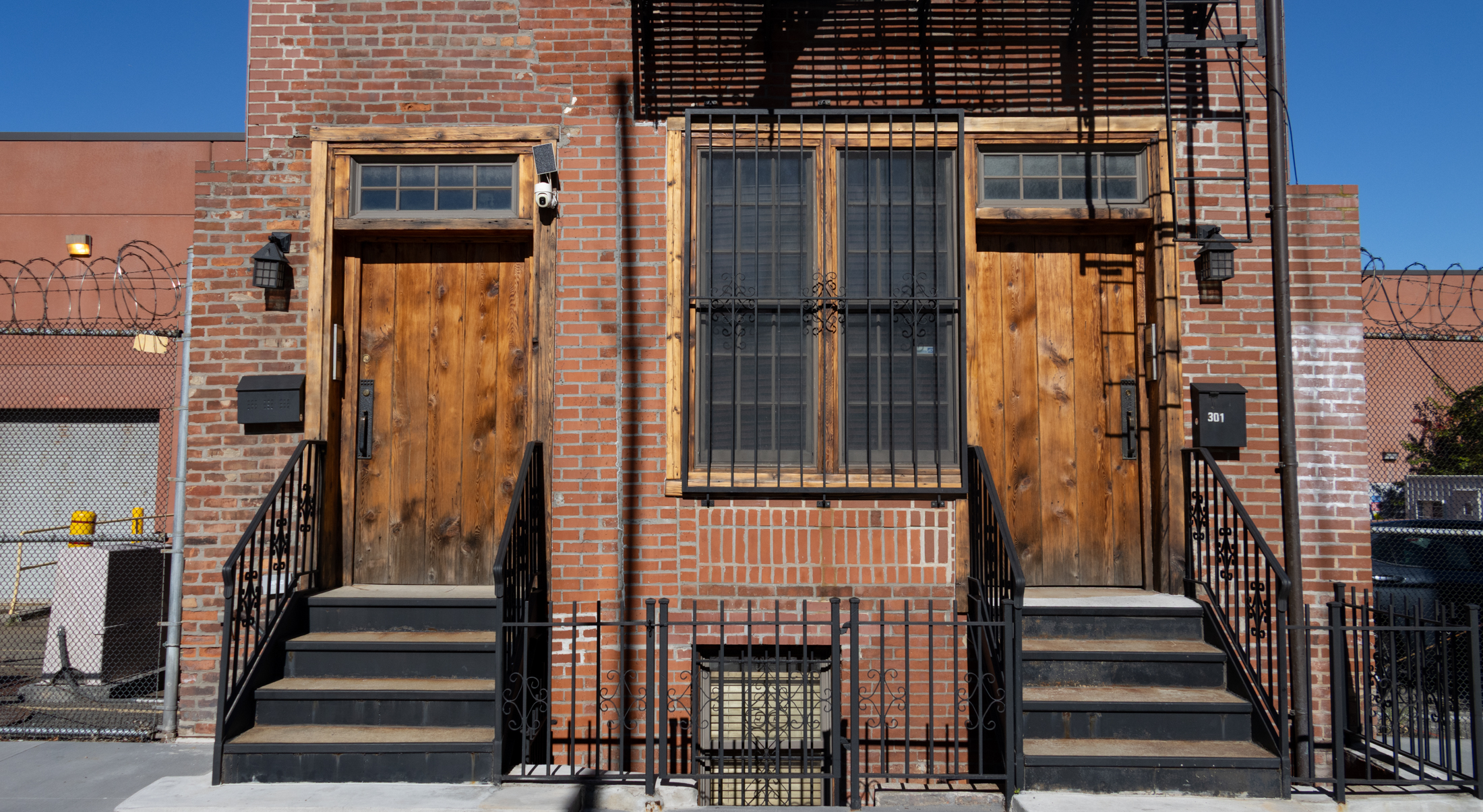Walkabout: Axel Hedman, Brooklyn Architect
It often amazes me that the architects who have contributed so much to the streetscape of our Brooklyn neighborhoods are so little known. This is especially true of someone like Axel Hedman, who in sheer terms of numbers, contributed so much. We are lucky that we have a photograph of Mr. Hedman, and that something…

A row on 3rd Street in Park Slope. Photo by Suzanne Spellen
It often amazes me that the architects who have contributed so much to the streetscape of our Brooklyn neighborhoods are so little known. This is especially true of someone like Axel Hedman, who in sheer terms of numbers, contributed so much.
We are lucky that we have a photograph of Mr. Hedman, and that something is known about his life. His great granddaughter, Barbara Hedman-Kettell, had done extensive research on his life and work, and much of the biographical work here is from that research.
Axel Hedman was born in Sweden in 1861, and emigrated to America in 1880. He became an American citizen in 1901, and lived in Brooklyn until his death in 1943. He’s listed in Brooklyn directories between 1894 and 1936.

In addition to designing under his own name, he was in partnership with Magnus Dahlander between 1894 and 1896, and with Eugene Schoen from between 1906 and 1918. Magnus Dahlander, who will be featured here at some point, was another talented Brooklyn architect, who worked in Bed-Stuy, Crown Heights, and Prospect Heights, and Eugene Schoen was featured last week as a talented furniture designer, as well as architect of synagogues and other buildings.
Whether alone or in partnership, Axel Hedman, by the end of his career, had amassed an amazing amount of work, perhaps more than any other of Brooklyn’s many architects. We can divide his work into basically three categories, row houses, flats and apartment buildings, and civic buildings. Today we’ll look at his row houses, Thursday we’ll cover the other buildings.
When it comes to Hedman’s row houses, few architects can claim to be as prolific as he was. He literally designed hundreds of row houses in the neighborhoods of Crown Heights North and South, Bedford Stuyvesant, Clinton Hill, Park Slope, Sunset Park, and Prospect Lefferts Gardens/Lefferts Manor.

Most of his work is concentrated between 1890 andd 1912. He was very influenced by the White Cities Movement, which came out of the World’s Colombian Exhibition of 1893, in Chicago. Limestone or light colored brick or stucco became the materials of choice, echoing the white buildings of the fair, with their Classical lines and detailing.
Some of Hedman’s houses of this period, and earliert are of brownstone, and he continues to use that material throughout the decade, but most of his buildings are limestone. Most are classified as Renaissance Revival.
This style is either three or four stories, usually with a three-sided or rounded bay. Some are English basement, some are the familiar tall stoops. All have carved stone ornament decorating the lintels, doorways and bays.

This ornament is often mythical creatures or faces, with popular themes being dolphins, lions, dragons, female faces or Green Men. Often they are paired with floral motifs, swags and bows, shells, cornucopia, or shields.
After identifying a few Hedman houses, its easy to think that if you’ve seen one group, you’ve seen them all. That would not be correct. True, he had a couple of formulas, and he repeated his ornamental themes a lot. So much so that identifying a Hedman house can be pretty easy, although he seems to have close imitators.
But if you look closely, he tailored his buildings to the neighborhoods and probably to potential buyers, and he added touches that make many of his groupings stand out amidst their neighbors, as the exceptional houses they are. He liked to alternate bays.

Many of his groups have a round bay next to a 3 sided bay, next to a round bay, etc in an ABABABA pattern. He liked to design very eclectic roof lines on otherwise uniform houses. His houses on Maple St, in Lefferts Manor have unique cap-like roofs with prominent cornices and Mediterranean tile hats.
A group on Union Street, in Crown Heights South features even more unusual roof lines, alternating shields and shells, the shells being originally in Mediterranean tile. His English basement row on Ocean Ave, newly landmarked, is set back further into the lots, than many of his other groups.
This allows for plantings that can extend the garden line from the owners’ front doors across the park for acres of green. The then puts a private pathway in front of the stairs which runs across the row. Similar groups in Crown Heights North and South and Park Slope don’t have the deep setback, or the private walk, but have similar porch areas, and similar trim, yet different bays.

In the interiors, as well, Hedman built according to the neighborhood and income of his potential buyers. Many of his houses have rich Colonial Revival details, with Classical columns and pediments, popular with the Classical traditions of the White Cities and Colonial movements.
Some have distinctly Arts and Crafts/Craftsman details, featuring simpler tiles fireplaces and mantles, and dining rooms with tall wainscot paneling, plate rails and coffered ceilings. Original fixtures often include Medieval baronial sconces or chandeliers, and always fine parquet floors and built-ins.
Renaissance Revival homes usually have a more open floor plan, with large entrances often featuring sets of French doors, which allow light to pass through the house, or wide openings set flanked by columns. The rooms are usually large, and wide.

My Flickr page shows many examples of the row houses Axel Hedman is known for. You can’t help but notice the similarities, but look carefully at the details, they make his homes a delight.
On Thursday, I’ll introduce you to his multiple-unit buildings, as well as his other work. His apartment buildings are very different, from his houses, and from each other. I think the talent of Axel Hedman is best expressed in his apartment buildings. Bigger canvases, bigger ideas.
Axel Hedman designed some of his best row houses in Park Slope, with limestone rows on PPW, 3rd, 6th and Union Streets, as well as Polhemus Place. Some of the houses on Polhemus are brownstones, not limestones.

Unfortunately, due to ongoing computer problems, I don’t have access to very many of my Park Slope pix, as well as many other neighborhood photos, which would have shown more variety in his design. I’ll post these on Thursday, with his apartment buildings. Sorry for the inconvenience. I now have access to a new computer.
[Photos by Suzanne Spellen]





Rich Protestant ladies could wield a lot of power in the old days. Mrs William S. Packer had several rows of houses built in the Heights on spec, both on Remsen Street and on Grace Court.
I have a feeling nobody messed with her.
I’m looking forward to it, as well. I really like his work, and his books are a great resource.
Donald, there are several women who are listed as the developers for sites in Crown Heights North, around the same time. So it’s unusual, but not impossible. Women at that time, especially if they had money, had more power than we think.
MM – love the houses on Stuyvesant ‘doctors row’. They are grand looking inside and out.
Up until the budget crunch of the late 80’s or early 90’s the Landmarks Commission took it upon itself to nominate every city historic district to the State and National Registers of Historic Places.
I looked it up- it was the first for the city but it is also on the National Historic Register, designated in 1966. Looks like the LPC was first.
bxgrl,
Not only was the Brooklyn Heights HD a City designation, it was the very first one.
Donald. you’re welcome, I heard that Morrone’s book or report or whatever it is would be ready this year.
Hello Minard – I heard something about the Morrone undertaking you mention and I am looking forward to reading it once it is published. Thanks for your thoughts re 24 and 26. I will look into the possibility.
Very nice!
I know you’ve often posted on this subject, but I haven’t been able to read all the posts.
Can you elaborate on the ornament he implemented a little bit? To what extent were the individual ornamental details the actual Architect’s Design? Were these pulled from pattern books (off the shelf, if you will)?
Did architects at this scale and level of client wealth have the opportunity to create their own details?